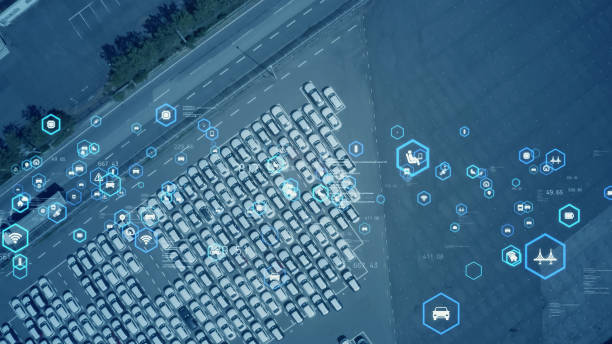Riding the Waves: Innovations in 5G Technology
In the fast-paced landscape of telecommunications, the advent of 5G technology represents a seismic shift that is transforming the way we connect, communicate, and consume data. As we embark on the journey of riding the waves of 5G innovations, it becomes evident that this fifth-generation wireless technology is not just an incremental upgrade but a revolutionary force with the potential to redefine entire industries and elevate the connected experience to unprecedented heights.
The Evolution from 4G to 5G
Before delving into the innovations of 5G, it’s crucial to understand the evolution from its predecessor, 4G. While 4G provided faster internet speeds compared to 3G, 5G takes connectivity to a whole new level. The key differentiators lie in speed, capacity, and latency. 5G is designed to deliver significantly faster data rates, accommodate a massive number of connected devices, and reduce latency to almost negligible levels.
- Speed: One of the most notable innovations brought by 5G is its remarkable speed. While 4G networks typically offer download speeds in the range of tens of megabits per second, 5G has the potential to deliver gigabit-level speeds. This exponential increase in speed translates to faster downloads, smoother streaming, and a more responsive online experience.
- Capacity: 5G is designed to handle a vast number of connected devices simultaneously. This is particularly crucial in an era where the Internet of Things (IoT) is becoming increasingly prevalent. From smart homes and connected cars to industrial IoT applications, 5G’s enhanced capacity ensures that the network can support the growing ecosystem of interconnected devices seamlessly.
- Low Latency: Latency, or the time it takes for data to travel from the source to the destination, is a critical factor in applications that demand real-time responsiveness. 5G aims to achieve ultra-low latency, reducing delays to milliseconds. This has significant implications for applications like augmented reality (AR), virtual reality (VR), online gaming, and autonomous vehicles, where instantaneous response times are paramount.
Innovations in Connectivity
1. Enhanced Mobile Broadband (eMBB):
The most immediate and visible impact of 5G is in the realm of enhanced mobile broadband. With faster download and upload speeds, users can experience smoother streaming, higher resolution video calls, and quicker access to content. This is particularly advantageous for applications that demand high bandwidth, such as 4K video streaming, virtual reality, and augmented reality experiences.
2. Internet of Things (IoT):
5G plays a pivotal role in enabling the massive connectivity required for the IoT. The ability to connect a vast number of devices simultaneously, coupled with low latency, opens up possibilities for smart cities, smart homes, industrial automation, and a myriad of other IoT applications. From smart thermostats to industrial sensors, 5G provides the backbone for a seamlessly interconnected world.
3. Mission-Critical Communications:
The low-latency capabilities of 5G make it ideal for mission-critical communications, especially in fields such as healthcare, public safety, and transportation. In emergency situations, where split-second decisions can be a matter of life and death, 5G ensures that communication is swift and reliable. This has implications for telemedicine, first responder applications, and connected vehicles.
Industries Transformed by 5G
1. Healthcare:
In the healthcare sector, 5G opens up new possibilities for remote patient monitoring, telemedicine, and augmented reality-assisted surgeries. The low latency of 5G enables real-time communication between devices, making it feasible to perform complex medical procedures with precision remotely. This is particularly relevant in situations where access to specialized medical expertise is limited.
2. Manufacturing:
5G’s impact on the manufacturing industry is profound. The ultra-reliable low-latency communication (URLLC) capabilities of 5G facilitate the deployment of connected factories, where machines, robots, and sensors communicate in real-time. This not only improves efficiency but also allows for predictive maintenance, reducing downtime and optimizing production processes.
3. Autonomous Vehicles:
The future of transportation is significantly influenced by 5G technology. Autonomous vehicles rely on instantaneous communication to navigate and make split-second decisions. With 5G, vehicles can communicate with each other and with infrastructure in real-time, enhancing safety and enabling the widespread adoption of autonomous driving technology.
Challenges and Considerations
While the potential of 5G is immense, it comes with its set of challenges and considerations. One significant challenge is the deployment of the necessary infrastructure. Building out the extensive network of small cells, antennas, and fiber-optic cables required for 5G coverage is a complex and resource-intensive task.
Moreover, the higher frequency bands used by 5G, known as millimeter waves, have a shorter range and can be easily obstructed by physical barriers. This necessitates a denser network infrastructure, particularly in urban areas, to ensure consistent and reliable coverage.
There are also concerns regarding the security of 5G networks. A cyber threat’s potential attack surface grows with the number of connected devices. Ensuring the robustness of 5G networks against cybersecurity threats is a critical aspect of its successful implementation.
Looking Ahead
As we ride the waves of 5G innovation, the technology continues to evolve, and its full potential is yet to be realized. The rollout of standalone 5G networks, advancements in edge computing, and the integration of artificial intelligence are expected to further enhance the capabilities of 5G.
In the years to come, 5G is likely to be a catalyst for innovations that go beyond traditional connectivity. From smart cities and immersive augmented reality experiences to breakthroughs in healthcare and manufacturing, the impact of 5G will reverberate across diverse sectors, shaping the way we live, work, and interact with the digital world.
In conclusion, 5G represents more than just an upgrade to our current wireless infrastructure; it marks a transformative shift that is reshaping the possibilities of connectivity. As the world becomes more interconnected and technology continues to advance, the innovations in 5G technology are set to propel us into a future where the digital and physical realms are seamlessly integrated, and the potential for innovation knows no bounds.







[…] reality has become an indispensable tool for navigation and exploration. Navigation apps leverage AR to provide users with real-time […]